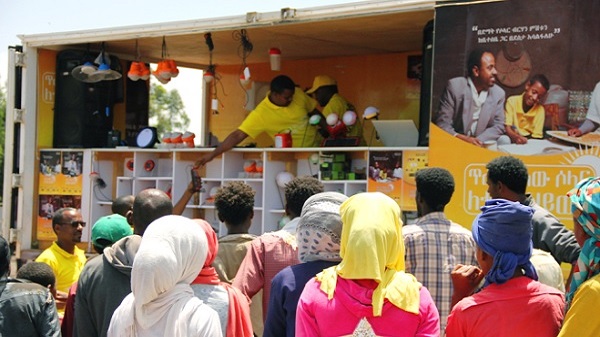
A fast growing market for solar products is driving an energy revolution in Ethiopia. Like many low-income countries, Ethiopia is a point of focus for international development and finance agencies as well as donors.
The Beam (CleanTechnica)
“Ninety thousand solar lanterns sold last quarter,” said Mr. Li. He was sharing sales numbers for his solar appliance business in Ethiopia and I couldn’t believe it.
To put this in perspective, the Global Off-Grid Lighting Association pegs the average number of all solar lighting products sold in Ethiopia in one quarter at around 250,000 units. In addition, close to 80% of Ethiopians live in rural areas with little to no access to electricity. Assuming two lanterns for every household and on average five people in each, Mr. Li might have provided energy access to close to a quarter million people within months. The catch, however, is that Mr. Li sells his solar products on the informal market, outside the government net, avoiding taxes and the country’s formal quality regime. As a result, his sales, though impactful, are at risk of being terminated.
A growing market for solar products in Ethiopia
A fast growing market for solar products is driving an energy revolution in Ethiopia. Like many low-income countries, Ethiopia is a point of focus for international development and finance agencies as well as donors. Such organizations are channeling tens of millions of dollars to Ethiopia for energy access. They are keen to understand local requirements in order to tailor financial flows and maximize the impact of their funds.
To that end, I recently visited Ethiopia and met and discussed the market’s dynamics with local enterprises, institutions and the government. What I learned was encouraging. On the face of it, the market has a high focus on quality: the World Bank’s “Lighting Africa” quality certification is mandatory for products and most key suppliers have this. Additionally, distribution networks are well established and run deep. Financing support too is available through micro-finance institutions offering consumer financing and banks that provide corporate credit to suppliers. Overall, the growth rate of energy access businesses is between 10–20% and there is tremendous optimism about the size and future of the market.
Despite such facts, sales volumes of solar products across the formal sector are quite low. One reason is scarce foreign exchange which makes imports difficult. Also, debt comes with crippling conditions like interest rates of 12–15% and high collateral requirements. As a result of these barriers, most businesses operating in the formal sector sell between 2,000–5,000 lanterns a year. Even some of the largest formal suppliers sell fewer than 20,000 lanterns a year. These numbers are an order of magnitude lower than those in the informal sector, where some suppliers, like Mr. Li, can sell over 100,000 lanterns a year.
Read the complete story at CleanTechnica
